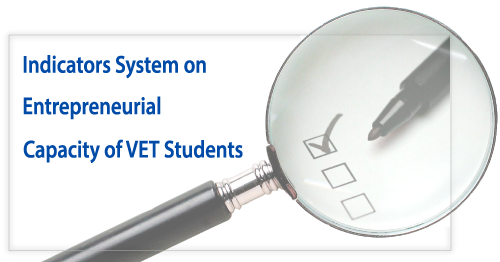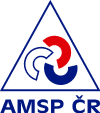![]()
The transfer of innovation, core activity of the EEC project will be supported by a project phase that will meet the gaps on evaluation highlighted in the reports of experts. This will ensure the efficiency of transfer at the end of the project process.

The main aims of this project phase are:
- To contribute to the development of indicators and the collection of quantitative data in the project area, which are still very limited. In most cases, precise figures are not available at a national/regional level on the number of schools and teachers involved in entrepreneurship courses and programs, and on the number of students participating in these schemes.
- To facilitate the measurement, in precise and objective terms, of the effort that is being produced and to monitor progress accomplished by developing comprehensive and objective quantitative data.
- To contribute to design measure of outcomes (for example, entrepreneurial capability), which become widely accepted and against which the activities can be judged.
- To improve the evaluation of the impact of ongoing measures, by elaborating indicators of “output” and clear benchmarks in this area.
- Indicators will be included in didactic guidelines showing how VET organizations can incorporate the project's results in their vocational activities.
To join this aims the project phase will be structured with a list of actions managed by the partnership:
- Analysis of the project documentation (deliverables, framework concept etc.) and official documents on entrepreneurship training in Europe.
- Definition of the variables object of measurement.
- Definition of the types of indicators to include in the system: impact, outcomes, inputs, outputs and process.
- Selection and design of indicators.
- Identification of sources of information and procedures for collecting and managing information.
- Elaboration of the indicators fact sheets.
- Development of a guide for the interpretation of indicators.
Indicators will be elaborated on the basis of the European Commission Evaluation Guideline, strictly following two methodological rules expressed in that document:
- The judgment criterion (also called reasoned assessment criterion) specifies an aspect of the evaluated intervention that will allow its merits or worth to be assessed in order to answer the evaluation question. For instance, capacity of the VET system to generate entrepreneurial mindset in the student with satisfactory quality. The question is drafted in a non-technical way with wording that is easily understood by all, even if it lacks precision. The judgment criterion focuses the question on the most essential points for the judgment. Yet the judgment criterion does not need to be totally precise. In the first example the term "satisfactory quality" can be specified elsewhere (at the indicator stage). Each question will be treated with a maximum of three judgment criteria (multi-criteria approach): more criteria would complicate the data collection and make the answer less clear. The judgment criterion chosen will be corresponding to the question, will specify the scope of the question and the type of cause-and-effect analysis.
- An indicator describes in detail the information required to answer the question according to the judgment criterion chosen. It is possible to define many indicators for the same judgment criterion. Relying upon several indicators allows for cross-checking and strengthens the evidence base on which the question is answered. However, an excessive number of indicators involves a heavy data collection workload without necessarily improving the soundness of the answer to the question. The indicator should not betray the judgment criterion. Each indicator will correspond faithfully in so far as it describes an essential aspect of the judgment criterion. Indicators must be defined without any ambiguity and understood in the same way by all the members of the evaluation team. This can be done with reference to an existing definition, or else a definition can be formulated as precisely as possible until there is no more ambiguity whatsoever. Indicators will be preferably associated with a target. The same indicator should be able to serve to collect data in several context: different countries, specialties, vocational paths, etc.
The final product of the activities held by the partnership during this project phase will be an INDICATORS SYSTEM ON ENTREPRENEURIAL CAPACITY OF VET STUDENTS, that will support all the teaching tools elaborated in the previous project phases and support with evaluation elements the VET and higher education teaching methods related with entrepreneurship.









